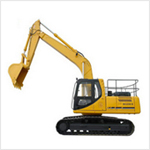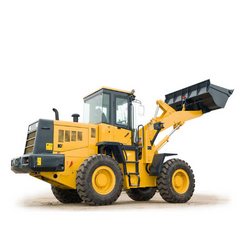

E680F Excavator
Model Number: E8680F
Operation quality of the whole machine: 7800 kg
Dougong: 0.16-0.32 M
Maximum excavation force: 56kN
Rotation speed: 0-11r/min
Walking speed (low/high: 2.86/5.0km/h)
Shape dimension of the whole machine (length x width x height: 6340 x 2240 x 2600 mm)
Maximum excavation radius: 6330 mm
Maximum excavation depth: 4160 mm
Engine power: 43.8kW
Bucket capacity: 0.18-0.21 M
Excavation force of bucket: 4.1 kN
Engine type: 4TNV94L
Rated power: 36.2 kW (48.3 HP) / 2100 rpm kw/rpm
Fuel tank: 115L
Dougong: 0.16-0.32 M
Maximum excavation force: 56kN
Rotation speed: 0-11r/min
Walking speed (low/high: 2.86/5.0km/h)
Shape dimension of the whole machine (length x width x height: 6340 x 2240 x 2600 mm)
Maximum excavation radius: 6330 mm
Maximum excavation depth: 4160 mm
Engine power: 43.8kW
Bucket capacity: 0.18-0.21 M
Excavation force of bucket: 4.1 kN
Engine type: 4TNV94L
Rated power: 36.2 kW (48.3 HP) / 2100 rpm kw/rpm
Fuel tank: 115L
t refers to a camera that USES a single lens and USES it to reflect light.
The so-called "single lens" means that the photographic exposure path and the viewfinder path share the same lens, and there is no independent lens in the viewfinder path like the side-axis camera or the dual-lens camera. "Reflection" refers to a planar mirror in the camera to separate the two light paths. When shooting, the mirror is quickly lifted and the light can be shone on the film or sensor CMOS or CCD.In this system, the unique design of the mirror and prism enables the photographer to directly observe the image through the lens from the viewfinder.
The configuration of the single-lens reflex camera shows that the light travels through the lens to the mirror and then reflects to the focusing screen above and forms the image. Through the eyepiece and five-prism, we can see the scene outside in the viewing window. The light passes through the lens and is reflected by the mirror into the frosted screen.
The so-called "single lens" means that the photographic exposure path and the viewfinder path share the same lens, and there is no independent lens in the viewfinder path like the side-axis camera or the dual-lens camera. "Reflection" refers to a planar mirror in the camera to separate the two light paths. When shooting, the mirror is quickly lifted and the light can be shone on the film or sensor CMOS or CCD.In this system, the unique design of the mirror and prism enables the photographer to directly observe the image through the lens from the viewfinder.
The configuration of the single-lens reflex camera shows that the light travels through the lens to the mirror and then reflects to the focusing screen above and forms the image. Through the eyepiece and five-prism, we can see the scene outside in the viewing window. The light passes through the lens and is reflected by the mirror into the frosted screen.
The so-called "single lens" means that the photographic exposure path and the viewfinder path share the same lens, and there is no independent lens in the viewfinder path like the side-axis camera or the dual-lens camera. "Reflection" refers to a planar mirror in the camera to separate the two light paths. When shooting, the mirror is quickly lifted and the light can be shone on the film or sensor CMOS or CCD.In this system, the unique design of the mirror and prism enables the photographer to directly observe the image through the lens from the viewfinder.
The configuration of the single-lens reflex camera shows that the light travels through the lens to the mirror and then reflects to the focusing screen above and forms the image. Through the eyepiece and five-prism, we can see the scene outside in the viewing window. The light passes through the lens and is reflected by the mirror into the frosted screen.
The so-called "single lens" means that the photographic exposure path and the viewfinder path share the same lens, and there is no independent lens in the viewfinder path like the side-axis camera or the dual-lens camera. "Reflection" refers to a planar mirror in the camera to separate the two light paths. When shooting, the mirror is quickly lifted and the light can be shone on the film or sensor CMOS or CCD.In this system, the unique design of the mirror and prism enables the photographer to directly observe the image through the lens from the viewfinder.
The Single Lens Reflex Camera is called a SLR Camera. It refers to a camera that USES a single lens and USES it to reflect light.The Single Lens Reflex Camera is called a SLR Camera.
The configuration of the single-lens reflex camera shows that the light travels through the lens to the mirror and then reflects to the focusing screen above and forms the image. Through the eyepiece and five-prism, we can see the scene outside in the viewing window. The light passes through the lens and is reflected by the mirror into the frosted screen.
















 18712345678
18712345678 18712345678
18712345678
 semcms
semcms